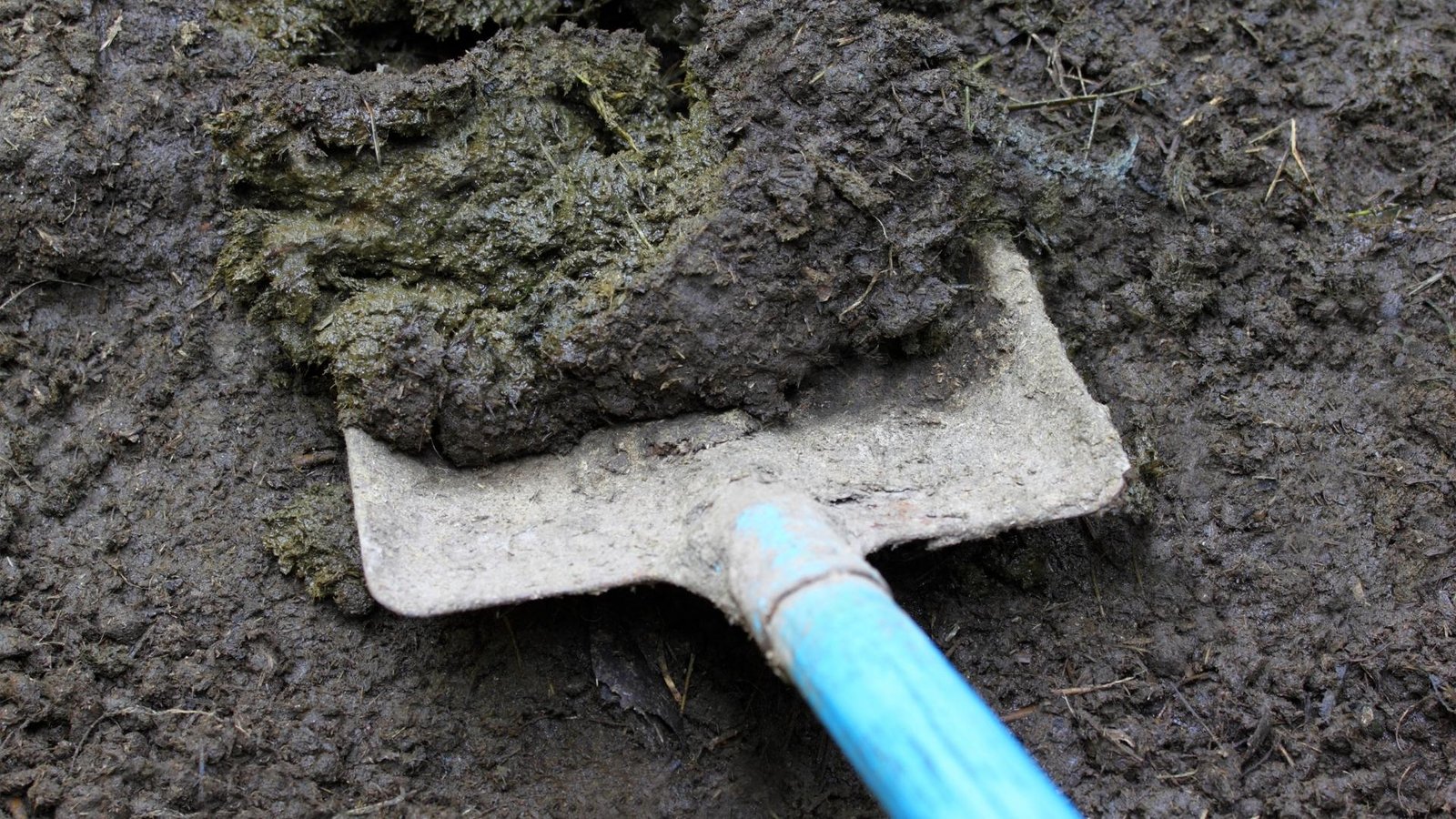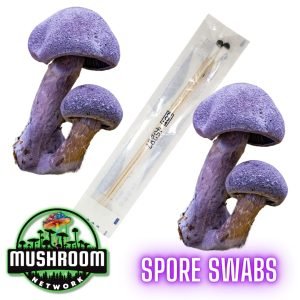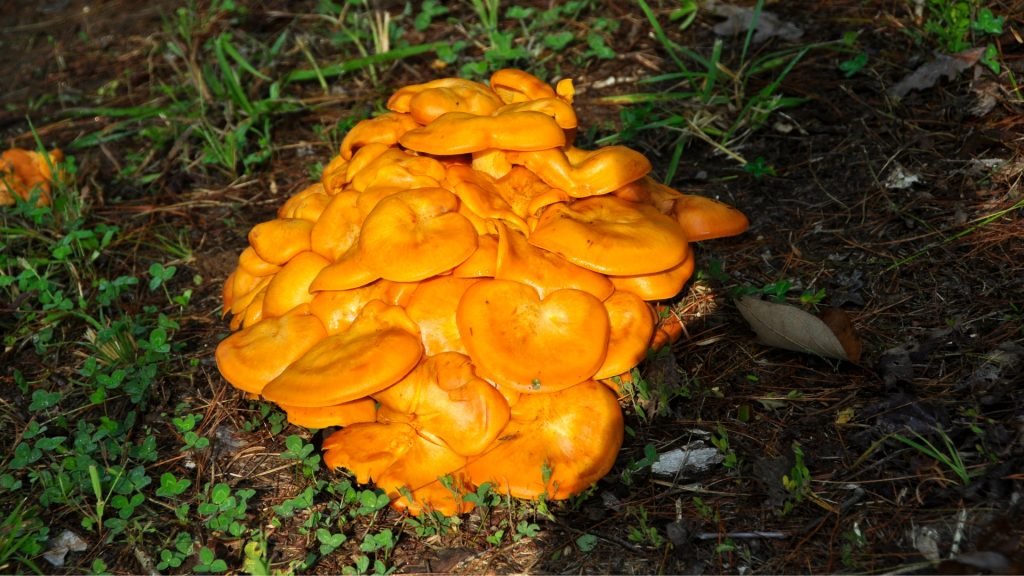From the ancient pastures to the modern mycologist’s toolkit, manure has long been a foundation for fungal growth. Dive into this guide and unearth the intricate art of using manure as a substrate to cultivate mycelial wonders.
Understanding the Level:
Manure-based substrates represent an intermediate step in mushroom cultivation! While beginners can surely embark on this journey with a diligent approach, those with a foundational understanding of mycology might find this substrate more accommodating to navigate.
INTRODUCTION:
Welcome to a dynamic hub of knowledge that, like mycelium, is ever-growing. This guide not only lists essential ingredients but also evolves with the shared wisdom of the mycological community. Prepare to deep-dive into the nuances of manure-based substrates.

MATERIALS NEEDED:
- Well-aged manure (horse or cow preferred)
- Vermiculite
- Water
- Pressure cooker or large pot
- Mixing bowl
- Thermometer
- Gypsum (optional but beneficial for pH balance)
Manure TEK Quick Reference Chart:
| ITEMS | PER PINT JAR | PER QUART JAR |
| Aged Manure | 1 cup | 2 cups |
| Vermiculite | 1/3 cup | 2/3 cup |
| Water | 100ml | 200ml |
| Gypsum | 1 teaspoons | 2 teaspoons |
| Karo Syrup (Optional) | 5ml | 10ml |
| Pressure Cooking Time | 90 Minutes | 90 Minutes |
| Pressure Cooking PSI | 15 PSI | 15 PSI |
Note: Gypsum and Karo syrup are optional, but they enhance texture and nutritional content.

PROCEDURE:
Source and Prep the Manure:
- Begin your substrate preparation by sourcing well-aged and dried herbivore manure.
- Fresh manure can be rife with undesirable microorganisms.
- Aged manure, typically left to dry for several months, will have seen a significant reduction in these pathogens.
Introduce Vermiculite:
- In a spacious container or bowl, combine the dried manure with vermiculite.
- Vermiculite, a mineral compound, not only aerates the substrate but also aids in maintaining optimum moisture levels, providing a conducive environment for mycelium to grow.
Hydrate the Mixture:
- Slowly introduce water to the mix.
- Your aim is to achieve the “field capacity” state. This means that upon squeezing a handful of the substrate, it should hold its shape and release only a few droplets of water, not a stream.
Incorporate Gypsum:
- If you’ve opted to use gypsum, now is the time to mix it into your substrate.
- Gypsum can enhance the texture of the substrate and regulate its pH, fostering an environment conducive for mycelial growth.
Jar Filling:
- Filling: Scoop your moistened manure-vermiculite blend into your pint or quart-sized jars.
- PLEASE NOTE: If you followed our recipe (shown above) you shouldn’t have to worry about this however, ensure you leave about a 1-inch gap at the top to facilitate room for expansion and air exchange.
- Securing Lids: When placing the lid, ensure the rubber seal faces upward. This helps prevent the jars from getting vacuum-sealed during the sterilization process. Another option is to use a mycology lid such as one that contains a filtered vent and/or injection port (we have articles, DIY Supplies, and both Free & Paid for Mycology Courses hosted on our 🍄 Mushroom Academy!
- Foil Cover: Wrap the tops of the jars with aluminum foil. This provides an added layer of protection against potential moisture intrusion during pressure cooking.
Sterilization:
- Sterilize the jars using a pressure cooker, maintaining 15 PSI for a duration of 90 minutes.
- For those without a pressure cooker, a regular pot can be used. However, the jars will need to be steamed for a longer duration, roughly 2 hours. Ensure the pot’s lid forms a tight seal to maximize steam retention.
Cooling Phase:
- After cooling the jars to room temperature, they’re primed for inoculation with your chosen fungal culture.
Remember, each step is integral to the success of your mycological endeavors. The universe of mushrooms is expansive, each variant bearing its own unique charm and characteristics. The Marketplace on the 🍄 Mushroom Network is a testament to this diversity. It is a haven for those seeking a deeper understanding of the magical world of mushrooms. If you’re keen on learning more about this type of mushroom and other mushroom variants, this Marketplace is your ultimate resource.
ADDITIONAL INSIGHTS & TIPS:
Understanding Your Manure Source: The type of manure you select can make a significant difference. It’s vital to source manure from herbivores. Examples include horses, cows, or even elephants. Carnivore manure contains different microorganisms and doesn’t offer the same nutrient profile suitable for mushroom cultivation.
Horse vs. Cow Manure: While both horse and cow manure can be used, they have distinct characteristics. Horse manure often possesses a finer texture due to their digestion process and can sometimes be less prone to certain contaminants than cow manure. However, both can produce robust mycelium growth if prepared correctly.
Sterilization Significance: Manure, being rich in organic matter, is a magnet for a plethora of microorganisms. This makes the sterilization step indispensable. Proper sterilization ensures your chosen fungal culture doesn’t have to compete with unwanted microbes, maximizing the chances of successful colonization.
The Richness of Manure: One of the standout benefits of using manure as a substrate is its nutrient-dense nature. When compared to some other substrates, manure can often lead to larger and more prolific flushes of mushrooms, making it a favorite choice for many cultivators, especially those growing species like the cubensis varieties.
Related Reads:
Substrate for Mycology: A Comprehensive Guide on Using Manure
From the ancient pastures to the modern mycologist’s toolkit, manure has long been a foundation...
Read More...
CONCLUSION:
With manure’s ancient ties to fungal growth and your newfound knowledge, you’re poised to delve deep into the art of mushroom cultivation. And remember, the 🍄Mushroom Network is your ever-present ally on this journey. Be it through our articles, expert-led courses at the 🍄 Mushroom Academy, or our carefully curated genetics and substrates, we aim for your mycological success. Together, let’s turn the mysteries of mycology into marvels.
Don’t forget to check out the 🍄 Mushroom Network’s Marketplace to see what’s available. But hurry, our shelves are constantly evolving, and you wouldn’t want to miss out on this wonderful mushroom. Join our growing network of Patrons, Genetics, and Mycologist Vendors only on the 🍄 Mushroom Network!
Recommended Reads:
The Mindful Mycophile: Harmonizing Mushrooms and Mindfulness
About This Article: Dive headfirst into the whimsical world of ‘The Mindful Mycophile,’ where mushrooms...
Read More...Attack of the Green Mold: Defending Your Mushroom Empire
About This Article: Embark on a fungal adventure with ‘Attack of the Green Mold: Defending...
Read More...Modern Renaissance: The Resurgence of Psychedelic Fungi in Therapy
ADMIN. ONLY PAGE NOTE Journey through the ‘Modern Renaissance’ of psychedelic fungi in therapy. 🍄...
Read More...Shiitake (Lentinula Edodes)
Welcome to another fascinating journey through the mycological marvels of our planet. Today, we’re diving...
Read More...Whoa there, Spore Sport! 🍄 Looks like you’re not logged in yet. Don’t you know what you’re missing? MYCO-CREDITS! Imagine all the fungal fun you could have. It’s like finding a Morel in May and not picking it. Tragic, right? Log In or Become a Myco-Patron and start racking up those credits. It’s more rewarding than finding a mushroom in your backyard! 🌟🏡














